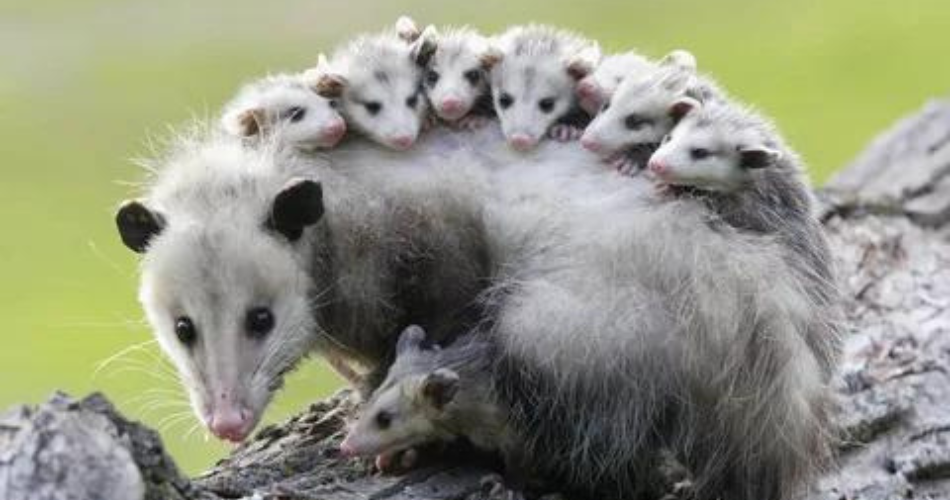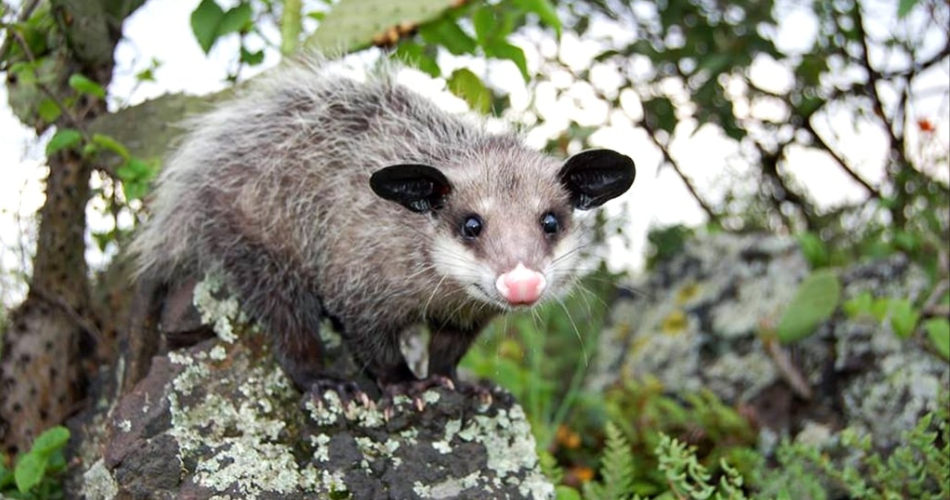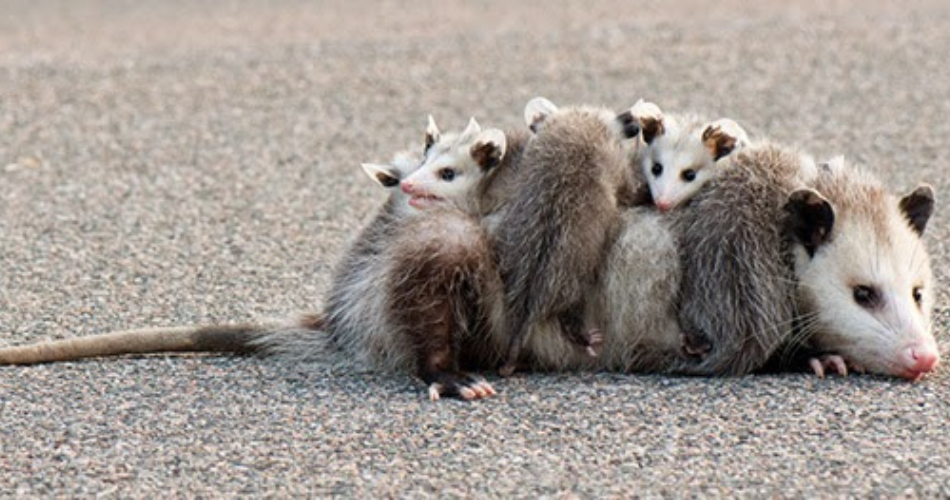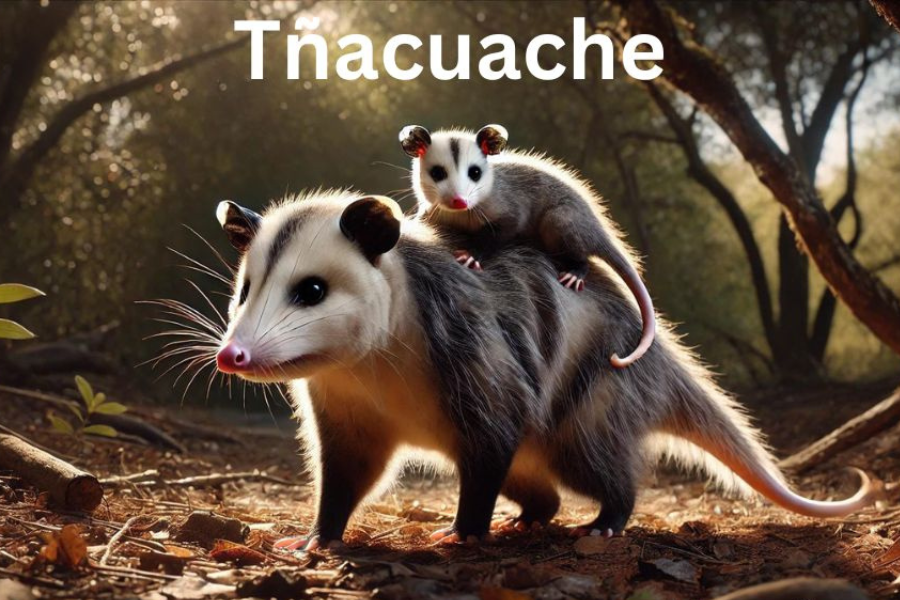The Tñacuache Unveiled: Exploring the Resilient World of the Opossum
Introduction
In the vast and intricate web of wildlife, the Tñacuache, commonly known as the opossum, often flies under the radar compared to its more glamorous counterparts. Despite its lack of flamboyance, this resilient marsupial exemplifies nature’s remarkable adaptability and survival strategies. Native to the Americas, the Tñacuache thrives across a diverse array of environments, showcasing a remarkable ability to adjust and prosper. This article delves into the captivating world of the Tñacuache, exploring its unique physical features, varied habitats, dietary preferences, behavioral patterns, and its crucial role in maintaining ecological balance.
Understanding the Tñacuache
Physical Characteristics of the Tñacuache
The Tñacuache is a medium-sized marsupial characterized by several distinct physical features. Typically measuring between 30 and 50 centimeters in body length, it boasts a prehensile tail that extends an additional 25 to 40 centimeters. Weighing between 2 and 5 kilograms, the Tñacuache is built for adaptability with a sturdy and versatile body structure.
Its fur, a mottled blend of grey and white, provides effective camouflage within its varied habitats. The tail, with its scaly and partially exposed nature, is crucial for grasping branches and navigating through trees. Additionally, the Tñacuache’s elongated snout, large expressive ears, and sharp teeth reflect its omnivorous diet. These physical adaptations are essential for its survival and daily functioning, enabling it to thrive in diverse environments.
Habitat and Geographic Range
The Tñacuache is renowned for its adaptability, evident in its extensive geographic range. It is found throughout the Americas, from the northern reaches of North America to the southernmost parts of South America. This wide distribution spans various environments, including dense forests, expansive grasslands, and even urban and suburban areas.
The Tñacuache’s ability to endure diverse climatic conditions underscores its resilience. It can withstand the heat of tropical climates as well as the colder temperatures of northern regions. Its fur provides insulation against the cold, while its capacity to store body fat helps it survive harsher weather conditions. This flexibility is crucial for its survival in the face of changing environments and human encroachment.
Diet and Foraging Behavior
As an omnivorous marsupial, the Tñacuache exhibits a varied diet that enhances its adaptability. It consumes a wide range of foods, including fruits, insects, small vertebrates, and carrion. This dietary flexibility allows the Tñacuache to thrive in various ecosystems, from tropical rainforests to urban areas with fluctuating food sources.
The Tñacuache uses its keen sense of smell and dexterous hands for foraging. By feeding on diverse food items, it plays a significant role in its ecosystem. It helps regulate insect populations and contributes to seed dispersal, supporting plant regeneration and overall biodiversity. This multifaceted diet enables the Tñacuache to be a crucial player in its habitat’s ecological balance.
Behavior and Social Structure
Nocturnal Behavior and Adaptations
The Tñacuache is primarily nocturnal, a behavior that is central to its survival and daily routines. During the day, it seeks shelter in hidden dens or nests, which are often located in tree hollows, burrows, or concealed crevices. These secluded resting spots provide essential protection from predators and adverse weather conditions. By staying hidden during daylight hours, the Tñacuache minimizes encounters with daytime predators, such as hawks and larger mammals, thereby enhancing its chances of survival.
At night, the Tñacuache becomes active, emerging from its shelter to forage and explore its surroundings. The cover of darkness provides a strategic advantage, helping the opossum avoid many dangers it might face if active during the day. This nocturnal lifestyle also reduces competition for food resources, allowing the Tñacuache to access a variety of food sources, including insects, fruits, and small animals, which might be more limited or contested during daylight hours.
Solitary Behavior
Unlike many other mammals, the Tñacuache is a solitary animal, spending most of its life alone. These marsupials primarily come together for mating and do not form complex social groups or maintain long-term relationships with other individuals. Their solitary nature is reflected in their behavior and lifestyle, as they prefer to live and forage independently. This lack of social interaction means that Tñacuaches do not create hierarchies or cooperative groups, focusing instead on individual survival and reproduction.
Communication among Tñacuaches involves a range of vocalizations and body language. They produce various sounds, such as hisses, growls, and screeches, to convey different emotions and intentions. In addition to vocal signals, Tñacuaches use specific body postures to communicate. For example, arching their backs or showing their teeth can indicate aggression or defensiveness. This combination of vocal and visual signals allows Tñacuaches to communicate effectively, particularly during mating season or when facing potential threats.
Reproduction and Life Span
The reproductive cycle of the Tñacuache varies by region but generally occurs once or twice annually. After a brief gestation period of 12 to 14 days, the newborns are born in an undeveloped state and immediately seek refuge in the mother’s pouch. They remain in the pouch for about two months, continuing their development. Once sufficiently matured, the young Tñacuaches begin to explore outside the pouch and ride on their mother’s back until they are ready to survive independently.
Despite their adaptability, Tñacuaches face numerous challenges in the wild. Their average lifespan is relatively short, typically ranging from 2 to 4 years. Factors such as predation, environmental hazards, and human-related threats contribute to their limited life expectancy.
Ecological Impact and Conservation
Ecological Contributions
The Tñacuache plays a crucial role in maintaining ecological balance within its habitat. As an effective scavenger, it significantly contributes to environmental health by consuming carrion. This activity helps prevent the spread of diseases by cleaning up dead animals and accelerates the decomposition process. By breaking down decaying matter, the Tñacuache recycles nutrients back into the soil, fostering a more resilient and balanced ecosystem.
Beyond scavenging, the Tñacuache impacts plant diversity and ecosystem stability through its interactions with insects and vegetation. It feeds on various insects, including those that might otherwise damage plants and crops. By managing insect populations, the Tñacuache supports plant health and agricultural productivity. Additionally, as it forages, it unintentionally aids in seed dispersal. Seeds that are consumed and later excreted in different locations can lead to the growth of new plant life. This seed dispersal mechanism promotes plant diversity, supporting a wide range of other species and contributing to overall ecosystem health.
Conservation Challenges
Despite its critical role in ecosystems, the Tñacuache faces several threats that endanger its survival. Habitat destruction caused by deforestation, urban expansion, and road traffic significantly impacts its population.
To protect the Tñacuache and its habitat, it is essential to support wildlife conservation initiatives, advocate for habitat preservation, and minimize human-wildlife conflicts. Creating and maintaining safe environments for Tñacuaches is crucial for ensuring their continued survival and the overall health of the ecosystems they sustain.
Common Misconceptions and Cultural Significance
Common Misconceptions about the Tñacuache
The Tñacuache, or opossum, is often misunderstood and surrounded by several myths. A prevalent misconception is that these creatures are unhygienic and carry numerous diseases. Contrary to this belief, Tñacuaches are meticulous in their grooming habits and possess a natural resistance to several diseases, including rabies. They are generally clean animals and present minimal health risks to humans.
Another common myth is that Tñacuaches exhibit aggressive behavior. On the contrary, these animals are generally shy and prefer to avoid conflicts. Their primary defense strategy is to “play dead,” a behavior known as “playing possum.” This instinctive reaction confuses potential predators and allows the Tñacuache to evade danger.
Cultural Importance of the Tñacuache
Celebrated for its cleverness and survival skills, the Tñacuache features prominently in myths and stories passed down through generations. In these tales, the Tñacuache is often portrayed as a cunning and resourceful character, embodying the qualities needed to overcome challenges. This symbolic role underscores the admiration and respect it commands within different cultural contexts.
In modern times, the Tñacuache represents resilience and adaptability. Its ability to thrive in diverse environments, from urban areas to natural settings, serves as an inspiration for conservation efforts. The opossum’s success in various and often difficult conditions highlights the importance of protecting even the most undervalued species. By drawing attention to the Tñacuache’s ecological role, conservationists advocate for the preservation of all life forms, regardless of their perceived importance or status.
Conclusion
The Tñacuache, or opossum, is an extraordinary marsupial distinguished by its unique adaptations and ecological contributions. This remarkable creature demonstrates an impressive combination of physical traits and dietary flexibility, allowing it to thrive across diverse environments.
Its adaptability to varying habitats and its varied diet underscore its ecological significance. Understanding the Tñacuache’s impact on its environment highlights its role in maintaining ecological balance. This knowledge is vital for developing effective conservation strategies and ensuring the continued health of the ecosystems it supports.
Addressing common misconceptions and promoting conservation efforts are essential for preserving the Tñacuache’s place in nature. By supporting these initiatives, we can help safeguard this fascinating marsupial’s role in the environment and inspire future generations to value and protect our natural world.
Stay in the know with the latest news and updates on Tribuneheadline.com





